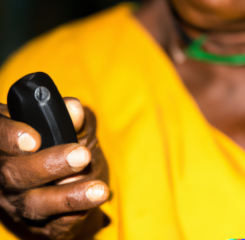Are Life Plan Community Residents Healthier?
Life plan community residents have greater emotional, social, physical, intellectual, and vocational wellness, but lower spiritual wellness, than community-dwelling older adults, according to findings from the first year of a 5-year, longitudinal study by Mather LifeWays, a LeadingAge member based in Evanston, IL.
Researchers at the Mather LifeWays Institute on Aging are attempting to document how living in a life plan community influences the health and wellness of residents over time.
First-year findings from the Age Well Study are based on responses to a survey of 5,176 residents living in the independent settings of 81 life plan communities across the nation. The survey, administered between January and May 2018, asked respondents to answer questions about their health, wellness, and other individual characteristics. Researchers plan to conduct similar surveys each year for the next 4 years, and to update their findings based on the results.
To analyze this year’s survey results, researchers compared the responses they received from life plan community residents with the responses of 1,000 community-dwelling older adults participating in the Health and Retirement Study (HRS). The HRS is a longitudinal study that has collected economic and health information from approximately 20,000 Americans since the 1990s. The HRS sample used by Mather LifeWays researchers included individuals whose age, income, and ethnicity were comparable to life plan community residents.
During the first year of the Age Well Study, researchers found several important differences between the life plan community residents in their sample and the sample of community-dwelling adults from the HRS database.
Health and Well-Being
Life plan community residents scored higher than community-dwelling older adults on several measures of emotional wellness, including:
- Satisfaction with life,
- Perceptions of aging, and
- Optimism.
Life plan community residents also had higher scores on several physical wellness measures, including:
- Self-reported health,
- Chronic conditions, and
- Vigorous/moderate/mild physical activity.
Personal Characteristics
Residents of life plan communities were similar in age to community-dwelling adults in the HRS study:
- 51% were between 80 and 84 years old.
- 45% were over age 84.
- 4% were younger than 80.
Researchers documented differences in gender and marital status between the two samples. For example:
- Two-thirds of life plan community residents were women, compared with 49% of the community-dwelling older adults.
- Not quite half (47%) of life plan community residents were married, compared to 64% of the community-dwelling older adults.
Community Characteristics
Life plan communities with at least 100 residents residing in independent living were eligible to enroll in the study. Data submitted to researchers by each life plan community illustrated both similarities and differences among the participating communities. For example:
- Approximately half of the life plan communities in the study reported that more than 300 people lived in their independent living settings. These communities were spread uniformly across the United States.
- Most life plan communities reported being nonprofit communities with entrance fees.
- Two-thirds of participating organizations were single-site life plan communities.
- Almost a third (18%) of the life plan communities were over 50 years old. An equal percentage of communities (7%) reported that they were either less than 10 years old or between 40 and 49 years old.

Most Recommended
February 29, 2024
Say Yes to Lobby Day!
April 05, 2024
Cyberattack Updates: Change Healthcare Payment Platform
April 24, 2024
 Nursing Home Staffing Ratios: LeadingAge Is On the Case
Nursing Home Staffing Ratios: LeadingAge Is On the Case
March 27, 2024
 Colleagues on the Move, March 27, 2024
Colleagues on the Move, March 27, 2024
April 12, 2024
Improving Medicare Advantage
Recently Added
April 24, 2024
 Salary Threshold for White Collar Overtime Exemptions Raised
Salary Threshold for White Collar Overtime Exemptions Raised
April 24, 2024
 Colleagues on the Move, April 24, 2024
Colleagues on the Move, April 24, 2024
April 22, 2024
CAST Safety Technology Selection Tool Updated
April 22, 2024



